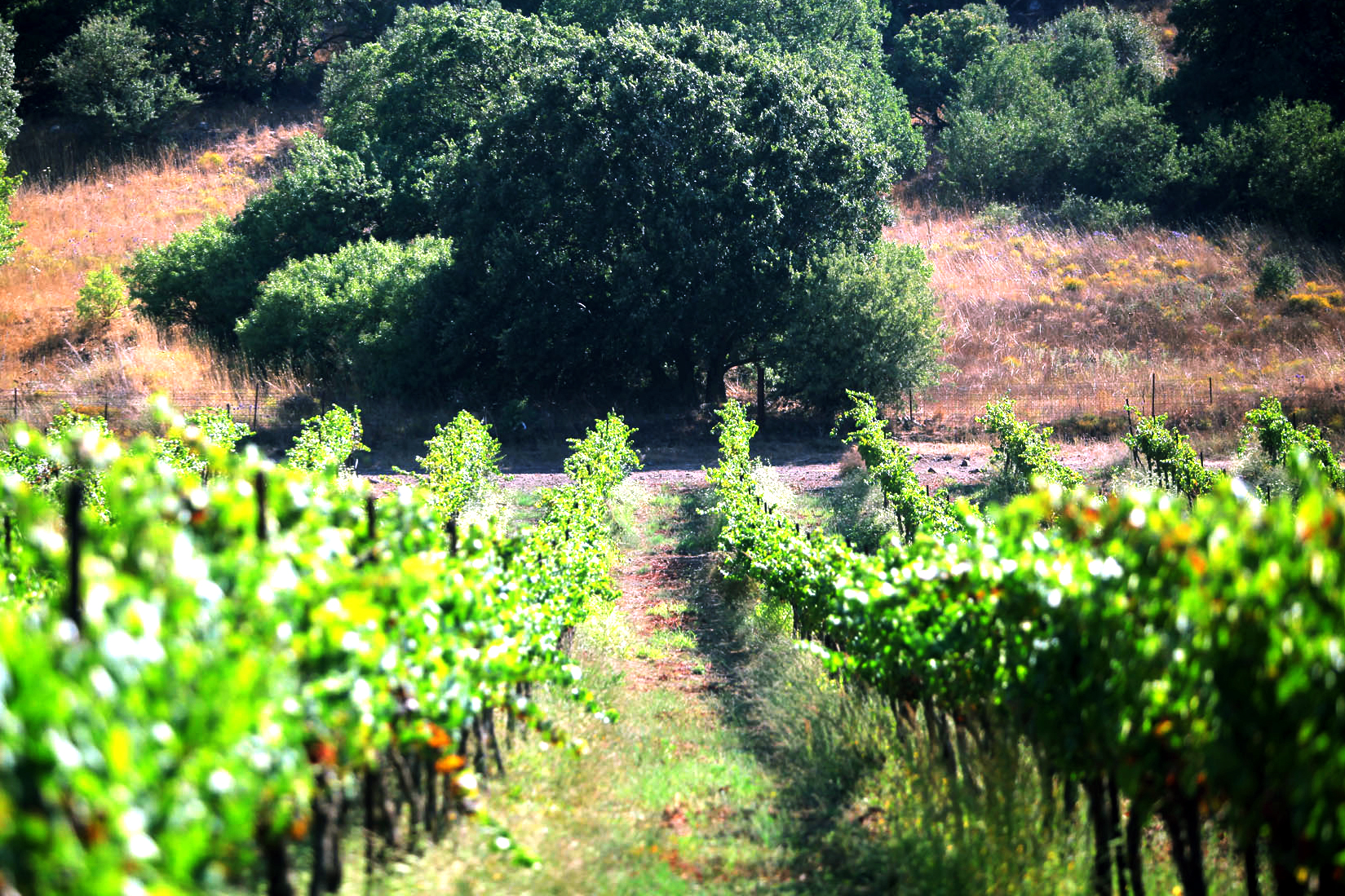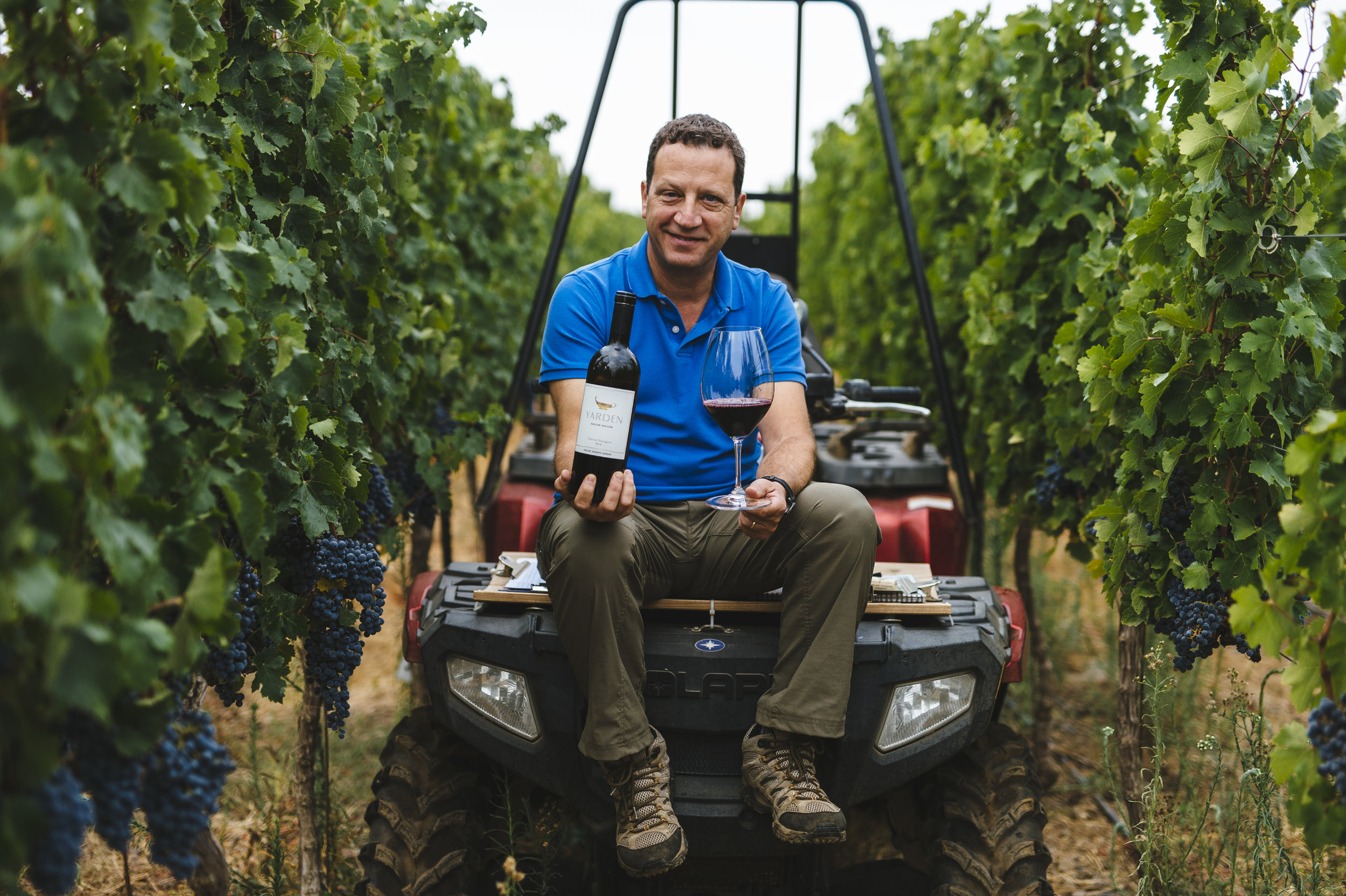Mischaracterizing These Golan Heights Wines Just Isn't Kosher
Yarden's winemaker Victor Schoenfeld aims to prove that just because a wine is Israeli, it shouldn't be relegated only to the kosher section.
All photos courtesy Golan Heights Winery.
“I think of myself as a conductor of an orchestra,” says Victor Schoenfeld. In a recent YouTube video, the Head Winemaker of the Golan Heights Winery compares winemaking to making music, in that he creates a final product through orchestrating different variables that ultimately harmonize into wine. The winery primarily focuses on expressions from sparkling to sweet under the Yarden label, but also several under the Gamla, Gigal and Mount Hermon brand. Schoenfeld uses familiar varietals such as sauvignon blanc, chardonnay, viognier, pinot noir, cabernet sauvignon, syrah and merlot, but akin to winemaking and viticulture in France, California and other parts of the world, the focus is on unique expressions of terroir that are refined and ageworthy. Unfortunately outside of their native Israel, because the wines happen to be kosher, they are often misshelved or misrepresented. They belong on a wine list, at celebratory occasions and should be considered a worthy indulgence just like any other fine wine.
I know this because I’ve tasted them alongside some pretty fabulous meals at two of New York City’s finest restaurants - Union Square Café and Gramercy Tavern. I was not at either place for a Jewish holiday celebration, or a bar/batmitzvah or wedding, but just for the dang fine food. The wines matched each dish beautifully. (In case you are wondering, yes, they are rather tasty when paired with shellfish.) “Around the world, our wines are most often sold as ‘Israeli,’” explains Schoenfeld. “Because the USA has such a well-defined kosher market, Israeli wines often thoughtlessly get placed in the ‘kosher’ section of a store, resulting in a lack of exposure and limiting the audience for our wines.” From the Land of Milk and Honey, attentive winemaking begats great wine, just like anywhere else. “Consider that there are no real production differences in high end Israeli wine and non-kosher wines and also that there are great Israeli wines that have no kosher certification. If putting Israeli wines in a dedicated ‘kosher’ section ever made sense, those days are long gone.”
Loa Avital Vineyard
Schoenfeld has been the winemaker at Golan Heights since 1992, where he arrived with quite the pedigree. He received a degree from UC Davis while interning at Robert Mondavi, then worked at Sonoma’s Preston Farm and Winery, Sonoma Creek Winery (now Larson) and Chateau St. Jean, before traveling to France to make Champagne with Jacquesson & Fils.
He then became vineyard manager for Tishbi-Baron Wine Cellars in Binyamina, Israel. Given the American-born wine aficionado’s background, the move to the Middle East makes sense. “I spent close to a year in Israel between high school and college and fell in love with agriculture. Being a food lover, I fell in love with the idea of producing food and becoming a farmer.”
Schoenfeld says he was first attracted to Yarden wines in 1983 when he tasted one in California. One might say happening upon that bottle was kismet, and he began to explore the possibility of making his own wine there someday. “At that time there were no Israeli winemakers (with an academic degree) and few winemakers with an Israel connection, so I was a rare commodity. In 1991 they offered me the opportunity to work alongside the previous winemaker (the fifth to come from California to work a stint) and take over for him at the end of the year.” The groundwork had been set, but there was work to do. “The winery was already making very nice wines, so I knew there was at least some potential. I never guessed in my wildest dreams just how much potential there was.”
Victor Schoenfeld
Wine has been made in Israel for at least 5,000 years, and Schoenfeld points out that Vitis vinifera is native to the Mediterranean, and quite used to the local climate. Why, then, did modern culture develop such a disconnect when it comes to wines made there? “The world generally thinks of wine being made from the 30th to 50th parallels,” observes Schoenfeld. He points out that although the Middle East gets blazingly hot, there are cooler climate zones in higher elevations, particularly in the Golan Heights. “Because we are on the southern side of this range, most of the wine being made in Israel today is from the 32nd to 33rd parallel, we look for the cooler parts of the country.”
He says the whites and pinot noir are grown at 3,000 - 4,000 foot elevations, while most of the reds grow at 2,000 - 3,000 feet- ideal conditions for the varietals used in the wines. One style, though, did bring some revelations: “The quality of our sparkling wines was initially a surprise to me. The northern Golan is a great place to grow fruit for sparkling wine,” he explains. “...the wine comes as a surprise to some and is useful at busting myths. I remember an Italian winemaker tasting our Yarden Blanc de Blancs once and immediately telling me, ‘I did not know Israel has such cool regions.’ That was his comment from just tasting the wine.”
After 27 years, Schoenfeld is still looking to investigate new frontiers from the land. “The amazing thing about Israel is that while we are a very small country, we have the diversity of climate and geography of a big country. The industry is still very much exploring that diversity.”
Wines to Try
Yarden Brut Rosé 2012: Made from pinot noir and chardonnay, this aromatic sparkler wakes up the palate with balanced acidity and graceful effervescence. $38
Yarden Pinot Gris 2017: The wine is subtle without being too watery or acidic, with just a hint of tropical elements. It’s a splendid match with sushi or light fish dishes, but I’m dying to try it with super spicy Thai food. $20
Yarden Katzrin Chardonnay 2016: Here’s a full bodied, Burgundian style with judicious oak accents, meant to pair with rich and earthy foods such as bisques and mushroom dishes. $39
Yarden 2T 2014: I’m a sucker for Portuguese and Spanish grape varietals, and this one, made from Touriga Nacional and Tinta Cao (hence the name) is just so much fun to sip. Look out for cola spices, concentrated dark fruit flavors and a touch of leather. $35
Yarden Cabernet Sauvignon 2014: Easily drinkable now with its generous display of dark berried fruit, vanilla and woodland accents, this wine is cellarable for a good 10 - 15 years. $36
Gilgal Syrah 2014: I love a jammy, spicy syrah that isn’t too much of a fruit bomb, and this wine fits all those needs, with some earthy and meaty notes, akin to styles from famous Rhone regions like Cornas, but such a bargain! $17
Mount Hermon Indigo 2016: This young wine made from cab and syrah is surprisingly ready to drink now. I’m always looking out for a good burger wine and luckily I found one to finish out barbecue season! $15
Yarden Rom 2013: I’m constantly on the lookout for great wines of this vintage, which is the same year Alcohol Professor was launched. As stated earlier, Schoenfeld compares what he does to conducting, and here cab, syrah and merlot truly do make up a pleasing symphony of flavors - a horn section of fruit, a string section of earth and spice, a percussive note of espresso and a triangle clang of citrus. $100




